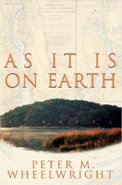
Bones play a significant role in The Door-Man. No spoiler there; they show up in the first paragraph of the novel:
It was shortly after the peculiar discovery at the Central Park Reservoir that I began dreaming about the men in my family again. About bones.
That said, the story gives even more time to “connective tissue” – the stuff without which bones simply collapse in a dry heap. James Weldon Johnson knew this when he wrote “Them Dry Bones” in 1928. You remember: “Your leg bone connected to your knee bone, Your knee bone connected to your thigh bone, Your thigh bone connected to your hip bone, Your hip bone connected to your back bone,” etc.
“Them Dry Bones” was inspired by Ezekiel 37:1-14 wherein the prophet is “set down in the midst of the valley which was full of bones…and, behold, there were very many in the open valley; and, lo, they were very dry…”
Salvation comes to all those very dry bones only when the Lord says: ” I will lay sinews upon you and bring up flesh upon you…“
So, I think it’s pretty clear that the song was actually a thinly disguised paean to connective tissue.
But this then begs the question: what happens to bones when the connective tissue starts to fail? And I don’t mean just my recent total knee arthroplasty (for the faint-hearted, don’t look too closely at the x-ray).
What I mean is that, in an important sense, this is the major premise of the novel – the failure of the connective tissue that binds families together.
Which brings me to compound lexemes, the hyphen in The Door-Man, and metal hinges.
Without getting too deep into linguistics, compound lexemes are essentially two distinct words that when combined form a third word with its own distinct meaning. Take “doorman” for example. Now, if you’ve noticed, there is a hyphen cracking apart that compound lexeme in the book’s title. Yet, re-connecting, in this case, inorganic and organic matter (again, no spoilers here, it’s revealed on page 6 of a 364 page novel)…think fossils, wink wink.
or consider the X-men in Chapter 5:
For much of the summer, on Sunday afternoons, a group of us have been meeting at the Arthur Ross Pinetum in Central Park to exercise together. We call ourselves the X-men. It’s an honorific that comes with a complementary dose of irony; most of us have grown soft and can neither run nor ride bicycles – weak ankles, bad knees, plantar fasciitis, or just plain laziness – low impact sports work best for the X-men.
It was the “Garbage-Man” who suggested Tai chi.
Dennis Fong is a past martial arts master who works for the Department of Sanitation. He’s an enforcer, not a hauler. He issues tickets to building owners who violate the sanitation laws – wrong pick-up nights, filthy sidewalks, and the like. The St. Urban is on his route. Tai chi keeps him sane, and he felt it might help the rest of us as well.
It was easy enough to get me on board. Why not, I am drawn to…well, unconventional pastimes. The others soon followed – Chavez, the “Elevator-Man” who handles the service lift at the St. Urban; Rosenberg, the “Telephone-Man” from Verizon who keeps the St. Urban’s dwindling land lines alive; Prickitt, our “Mail-Man” who happens to be a woman but doesn’t mind that we call ourselves the X-men instead of the X-people. She gets the point; we’re all hybrids, part human, part ‘thing’…or, better, part ‘infrastructure’ – unsung superheroes who have undergone a flesh‑altering transformation in order to ensure that the City can conduct its ordinary business unimpeded. Protagoras the sophist got it backwards…Things are the measure of all men, not the other way around.
Before settling on the grove of Pinus virginiana in The Pinetum, the X-men used to meet at the monuments. It seemed appropriate. More hybrids…inorganic objects linked to once organic flesh. Fong thought the meditative postures of the statues, anchored in their broad pedestals to fixed centers of gravity, might help us with our taolu. Furthermore, since there are currently fifty‑two statues spread across the Park’s eight hundred and fifty acres, it seemed like a nice idea to “push hands” at a different one every week – Alexander Hamilton, Beethoven, Columbus, Shakespeare, Webster…King Jagiello. They are like fossils – men and women turned to stone.
Mostly men, that is. We were on our sixth week, six statues in, up near 103rd Street, standing in front of the cast figure of Dr. J. Marion Sims – the “father” of American gynecology – when Bev Prickitt finally realized that there were no women on pedestals. Other than three fountain sprites and two versions of Alice in Wonderland, it was all “X-men” and bronzed animals. Even the Bethesda Fountain’s Angel of the Waters, commemorating the 1842 Croton water system, was a biblical make-believe from the Gospel of John. No more meanders in the Park. The Arthur Ross Pinetum, just south of the Reservoir, keeps everyone closer to home. Me most of all; I can see the water.
Oh,…and the metal hinge? As you can see, it’s now in my knee. As George Bernard Shaw once said: “If you cannot get rid of the family skeleton, you may as well make it dance.”
I’m workin’ on it.
Return to Ruminations







